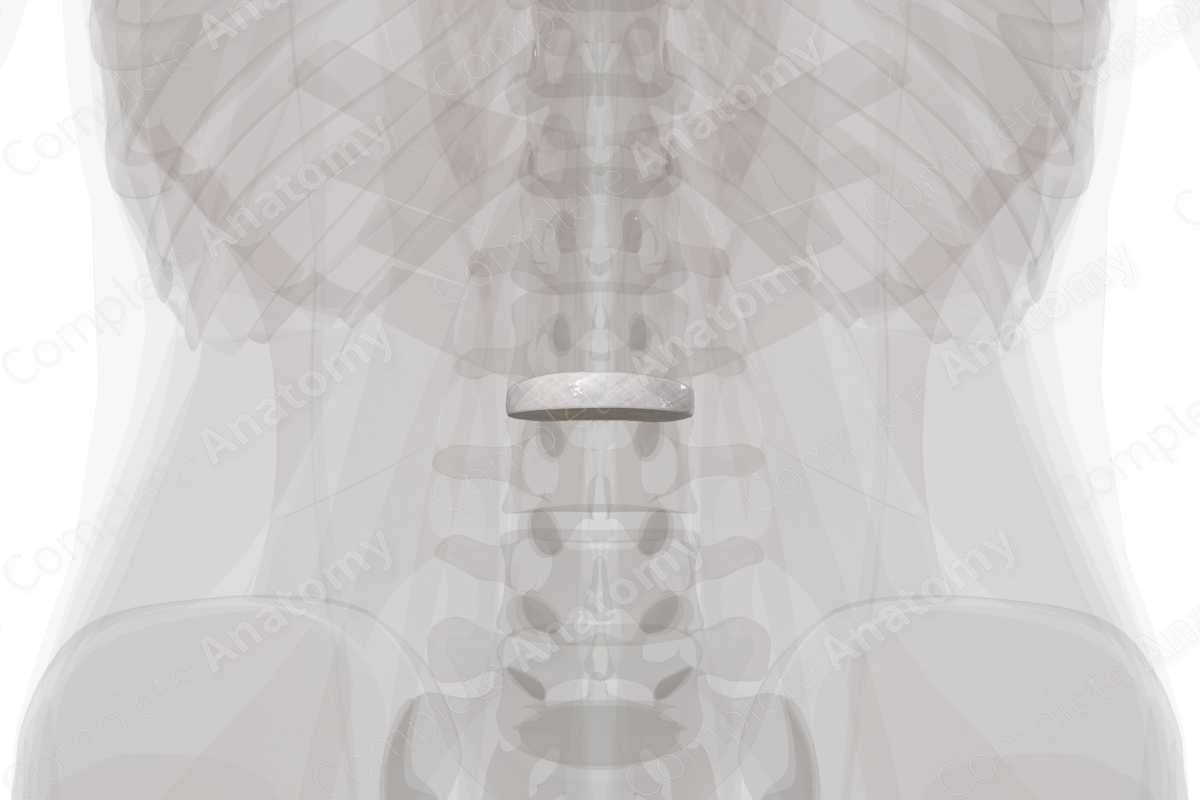
Anatomical Relations
The intervertebral disc is a fibrocartilaginous joint which sits between adjacent vertebral bodies. It consists of an inner nucleus pulposus and outer anulus fibrosus. The nucleus pulposus lies posterior to the center of the vertebral body. It is surrounded by the concentric lamellae of the anulus fibrosus.
Related parts of the anatomy
Function
The intervertebral discs give approximately 25% of total vertebral column length (4). The nucleus pulposus acts as a shock absorber and permits a very limited range of movement between vertebrae. The anulus fibrous connects adjacent vertebral bodies and confers stability to the vertebral column.
Structure
Overall, the intervertebral discs of the lumbar region are the thicker than their cervical or thoracic counterparts. Each disc is thinner posteriorly and assists in forming the curvature of the lumbar region.
The nucleus pulposus is a gelatinous tissue containing loosely connected collagen fibers while the annulus fibrosus contains a series of concentric lamellar rings of collagen fibers.
List of Clinical Correlates
—Lumbar spinal stenosis
—Laminectomy
References
Waxenbaum JA, B. F. Anatomy, Back, Spine, Intervertebral Disc. Treasure Island (FL): StatPearls Publishing; 2017.
Learn more about this topic from other Elsevier products





